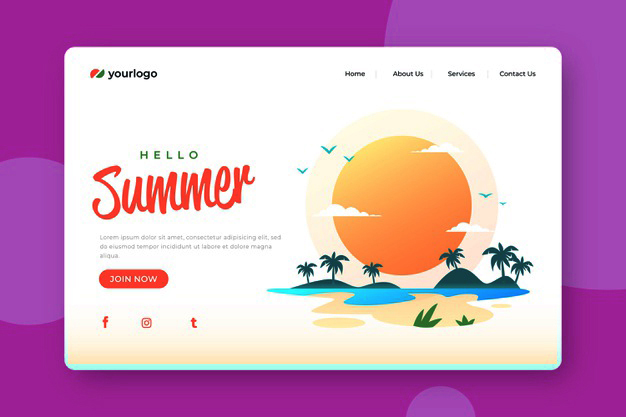Table of Contents
Graphic Design and Web Design Courses Suffolk
Graphic design is the product of visual ideas that create excellent communication in keeping with a plan. Graphic designers are primarily storytellers, who can simply, digestibly capture and present complex data. The graphic design can be used by companies to advertise and sell products, by websites to supply infographics clearly with complicated details, or by companies to establish an identity via branding, among other things.
Which is the best way of learning design?
Distance teaching is an online educational process that does not involve direct interaction with an instructor. Distance learning, however, has become a core element of the education system with patterns that suggest continuous growth.
The easiest way to learn graphic design is through an online course. Our Blue Sky Graphics online courses are delivered in a one-to-one environment to allow our students to study and learn more efficiently.

The Best Graphic Design Course
The graphic design course varies from school to school. It includes catering, just graphic design introductions, advanced style courses that cover basic concepts and basic rules, principles, and applications.
An excellent online environment will support an online course in graphic design and allow tutoring, student interaction, video-conferencing, and fast turnaround emails to be read live.

The course will consist of a categorical module that focuses on another aspect of the design process, including basic design, composition and design, typography, and advanced use of colours. You need to grasp the various graphic design principles at the end of the course, to develop high-quality logos, models, and other graphic applications.
Elevate your brand by using a website
You can prefabricate WordPress or create something on a builder of the user website, but still feel like it is, the same website everyone else does.
WordPress is standard because it’s secure and relatively easy to use, but most people don’t have the skills they need to customise templates. As a consequence, it is always difficult to differentiate the architecture of one organisation from another. It is the antithesis of good brand building. You want your website to stand out and not blend into the background noise.
Professional websites are typically fully customised to improve the brand and business elements. Your website is unique to your brand, helping drive loyalty to the brand. You have found that large corporations work hard to create easily recognisable websites. This is because they know how vital a flagship website is. It is the foundation of effective marketing.
But the difference is not just the style. Sufficient web copying is more critical in several ways. Good copywriting expresses the storey of your brand in a concise, subtle way, which highlights your values without sounding like a sales brochure. It produces a vivid and intimate interaction that allows consumers to make an emotional bond.
People have a lot to think about, and often use mental shortcuts to assist with information organisation. A good shorthand for most people is “a professional website is like a professional company.” When you have a reliable, professional site, it can help to make your company the leader in everything you do.
Proper SEO makes you visible
The creation of a professional website requires two methods. The research, design, and development work describes the site itself. And there is the optimisation process to ensure that the content ranks on Google and other search engines as high as possible.
A large number of variables are involved in this second method, called SEO or search engine optimisation. Some tweaks are slight, while others are dramatic. A website can generate far more traffic from regular, free search rankings by an SEO professional. More traffic means more visibility, more opportunities, and increasing business.
Proper SEO needs preparation and practise. When you design a website yourself, it is doubtful that it would be significantly optimised. Template websites are more reliable but incomplete. Only a qualified platform with design from the ground up will deliver the best results.

Your website is the marketing activities’ cornerstone
There are several positive marketing strategies. You have direct mail, radio/TV/print ads, banners, and more in the analogue era. Email promotions, PPCs, material, media, guest blogging, and paid search are available digitally. Each needs different assets and tactics, but all share one common component. They all point back to your website, after all.
A professional website is designed to provide information about your business and your goods and services in a single location. This allows prospects to know what they should do, addresses popular questions, hosts social media content, and makes it easier for people to reach you. As we can see, it also allows you to transform traffic from various sources.
The website is a common gateway, whether it was a Google ad, social media post, or highway billboard, for customers seeking additional information. A professional website is designed for all participants.
Your website is there to connect you with possible leads
Some prospects won’t necessarily move. It usually takes many contacts with your brand before its interest is sufficiently high. Professional websites have a wide variety of features designed to collect visitor information so that you can replace them later.
You can collect contact details from your guests by using free opt-in and pop-up forms, typically powered by some giveaway. It fills your email list with valuable information that has shown interest in your goods and services. The lifeblood of digital marketing strategies is the email list, an inexpensive way to hold the brand before your eye.
Tracking of pixels embedded in the website allows campaign re-targeting. Unlike cookies in several ways, pixel tracking enables visitor information to be collected and tracked seamlessly through devices.
Through using data that is obtained with an embedded pixel, you can then redirect the user to your site through another notification on another website. Retargeting improves the depth of the website and the brand experience.
Using in conjunction with email marketing and re-targeting, it helps the final traffic conversion and significantly improves it. And further transformations lead to development.



